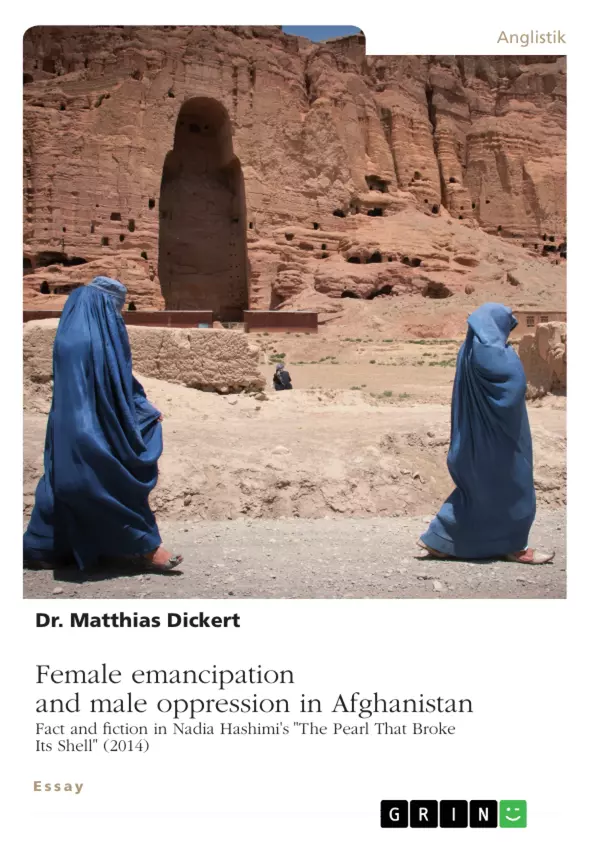The manifold reflections of loss of home or migration are complex in the displacement histories and narratives because they contain difficult, untraceable journeys and experiences of immigrants and refugees involved. At present, this also concerns the largest religious community linked to massive migration movements worldwide – Muslims. Most Muslim immigrants coming to Europe, Canada or the United States carry their national, cultural, religious and above all their personal past which taken together create an ideal basis for narrating their stories.
Things are worse in their own way when people at present cannot leave Afghanistan after the Taliban came back into power in 2021. Most Afghan people trying to escape from their mother country carry classical colonial or postcolonial topics such as matters of loss, expulsion, displacement, border crossing, exile, diaspora and home. These are – as in the case with female characters – often linked to intolerance, gender injustice or the inferior role of women in the Muslim world, which at present can be seen in the ongoing protests against the Mullah regime in Iran as well.
Nadia Hashimi's novel "The Pearl That Broke Its Shell" (2014) is set against a different background, reflecting the necessity to stay in Afghanistan against a Sharia background. The narration centers around (among other women) two female characters named Shekiba and Rahima. Both are family members of different time periods whose female role and struggle is set against Afghanistan's historic, cultural and religious background. The novel in parts can be seen as a literay addition to Khaled Hossein's "The Kite Runner" (2003) or Nadeem Aslam's "The Wasted Vigil" (2008) since both novelists also place their characters into an Afghan background.
Inhaltsverzeichnis (Table of Contents)
- Female emancipation and male oppression in Afghanistan — fact and fiction in Nadia Hashimi’s The Pearl That Broke Its Shell (2014)
- Abstract
- Nadia Hashimi’s novel The Pearl That Broke Its Shell (2014)
Zielsetzung und Themenschwerpunkte (Objectives and Key Themes)
This academic essay explores the complex themes of female emancipation and male oppression within the context of Afghanistan, drawing on Nadia Hashimi's novel "The Pearl That Broke Its Shell" (2014). The essay aims to analyze how the novel portrays the experiences of Afghan women within a Sharia-based society and to examine the interplay between tradition and modernity in shaping their lives.
- Female emancipation and empowerment in Afghanistan
- Male oppression and toxic masculinity in Afghan society
- Tradition versus modernity in Afghan culture
- The role of religious fundamentalism in shaping women's lives
- The impact of displacement and migration on Afghan women's experiences
Zusammenfassung der Kapitel (Chapter Summaries)
- The essay begins with a brief overview of the complex displacement histories and narratives of immigrants and refugees, particularly focusing on the experiences of Muslim immigrants. It highlights the challenges they face, including the need to navigate their own pasts and cultural identities in new environments.
- The essay then transitions to a discussion of Nadia Hashimi's novel "The Pearl That Broke Its Shell" (2014). The novel is set in Afghanistan and focuses on the lives of two female characters, Shekiba and Rahima, who navigate their roles and struggles within a traditional, religious context.
Schlüsselwörter (Keywords)
This essay focuses on the following key concepts: religious fundamentalism, Afghan women, emancipation, gender-crossing, patriarchy, toxic masculinity, domestic violence, empowerment, subaltern, displacement, emplacement, and tradition versus modernity.
- Citation du texte
- Dr. Matthias Dickert (Auteur), 2023, Female emancipation and male oppression in Afghanistan. Fact and fiction in Nadia Hashimi's "The Pearl That Broke Its Shell" (2014), Munich, GRIN Verlag, https://www.grin.com/document/1351677



